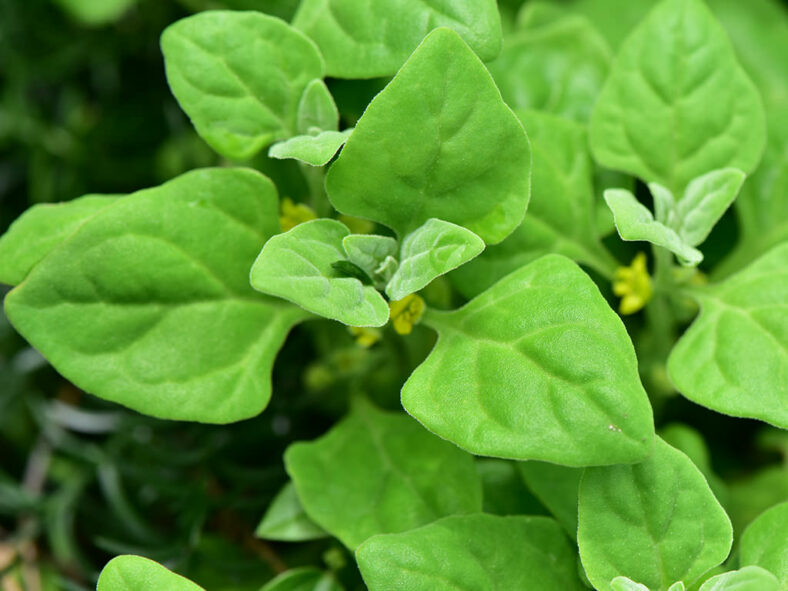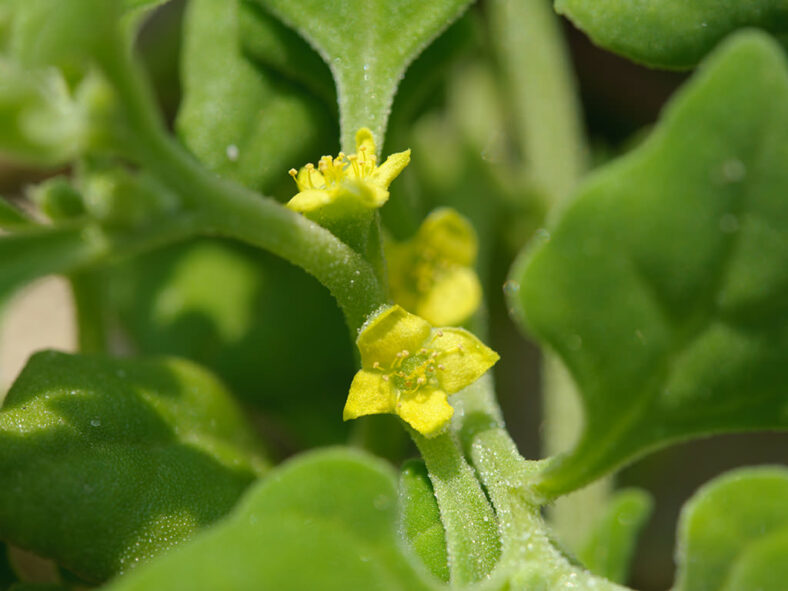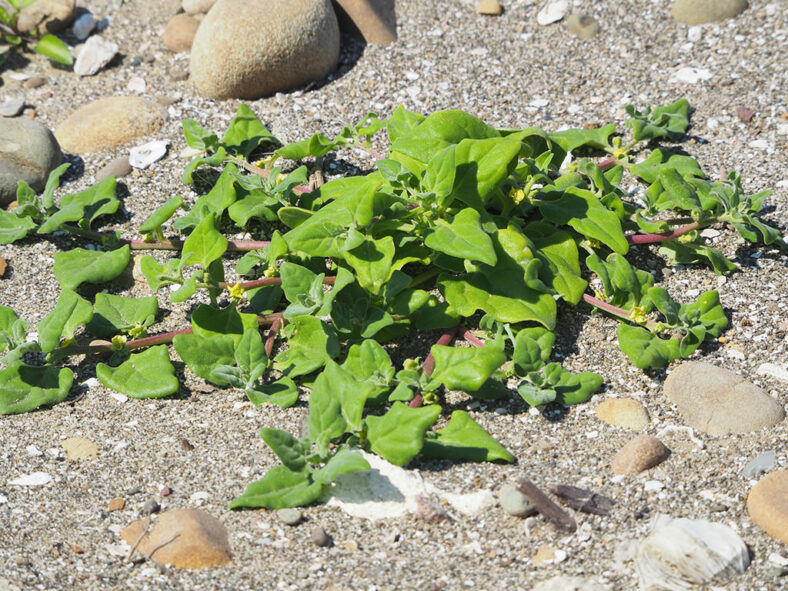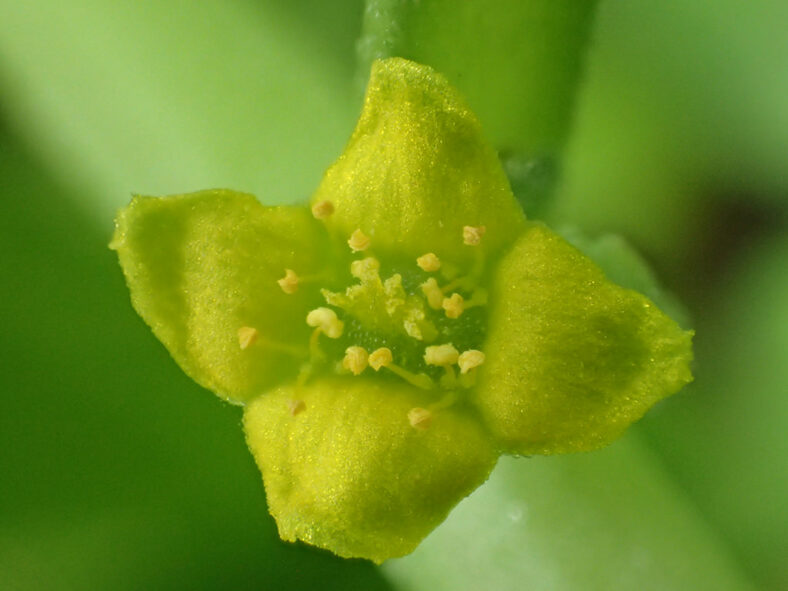Tetragonia tetragonoides is an edible plant used in salads in Western countries and in traditional medicine to treat gastrointestinal diseases.
Scientific Name
Tetragonia tetragonoides (Pall.) Kuntze
Common Name(s)
Botany Bay Spinach, Cook's Cabbage, New Zealand Spinach, Sea Spinach, Tetragon, Warrigal Cabbage, Warrigal Greens
Synonym(s)
Demidovia tetragonoides, Tetragonia expansa, Tetragonia tetragonioides
Scientific Classification
Family: Aizoaceae
Subfamily: Aizooideae
Tribe: Tetragonioideae
Genus: Tetragonia
Etymology
The specific epithet "tetragonoides (tet-ruh-gon-OY-deez)" means "Tetragonia-like" and is based on the first description of the species as Demidovia tetragonoides. As this is a compound epithet derived from a noun and a suffix, not two Greek or Latin words, it should not be altered to "tetragonioides."
Origin
Tetragonia tetragonoides is native to eastern Asia, parts of Australia, New Zealand, and some Pacific Islands, and it was widely introduced by cultivation as a vegetable. It occurs in sandy shorelines and bluffs, often in disturbed areas.
Description
Tetragonia tetragonoides, also known as Tetragonia tetragonioides, is an annual to short-lived perennial with trailing stems that bear green, somewhat succulent leaves. It can grow up to 16 inches (40 cm) tall and 3.3 feet (1 m) wide. Initially, the stems are erect, but as they grow, they become decumbent and form a thick carpet on the ground or climb through other vegetation and hang downwards. The leaves are rhomboid to triangular with midvein and lateral veins. They can measure up to 5.2 inches (12 cm) long and 3.4 inches (8.5 cm) wide and are attached to the stem by a thick petiole up to 1 inch (2.5 cm) long. Both surfaces of the leaves are very dense but finely papillose.
Throughout most of the year, Tetragonia tetragonoides produces solitary or paired flowers at the leaf bases. The flowers are green on the outside and bright yellow to yellowish-green on the inside, with a diameter of up to 0.3 inches (0.8 cm). The fruits are hard, conical or top-shaped capsules that bear a horn below each perianth segment, which sometimes gives rise to another flower or branchlet. They are up to 0.4 inches (1 cm) long and 0.3 inches (0.7 cm) in diameter.

How to Grow and Care for Tetragonia tetragonoides
Light: Tetragonia tetragonoides thrives in full sun but can also handle partial shade.
Soil: For best results, plant it in well-draining, sandy soil rich in organic matter and with a pH range of 6.8 to 7.0.
Temperature: Tetragonia tetragonoides is usually grown as an annual plant, but it is actually a frost-tender perennial that can be kept alive in pots with sufficient lighting during the winter. It grows best in USDA Plant Hardiness Zones 8a to 11b, with average minimum winter temperatures ranging from 10 to 50 °F (-12.2 to 10 °C).
Watering: While this plant is drought-tolerant, it is important to water it regularly to ensure it looks its best. During the winter, you can cut back on watering, but as the temperature increases, keep it well-watered to promote optimal growth.
Fertilizing: Feed your Tetragonia tetragonoides with slow-release fertilizer at the recommended rate for lush green leaves.
Propagation: This plant is easily started from seed and, once established, self-sows freely.
See more at How to Grow and Care for Tetragonia.
Toxicity of Tetragonia tetragonoides
Beyond vitamins and minerals, Tetragonia tetragonoides contains oxalates with oxalic acid, an organic compound that may be harmful if ingested in large quantities.
Links
- Back to genus Tetragonia
- Succupedia: Browse succulents by Scientific Name, Common Name, Genus, Family, USDA Hardiness Zone, Origin, or cacti by Genus
Photo Gallery
Click on a photo to see a larger version.


